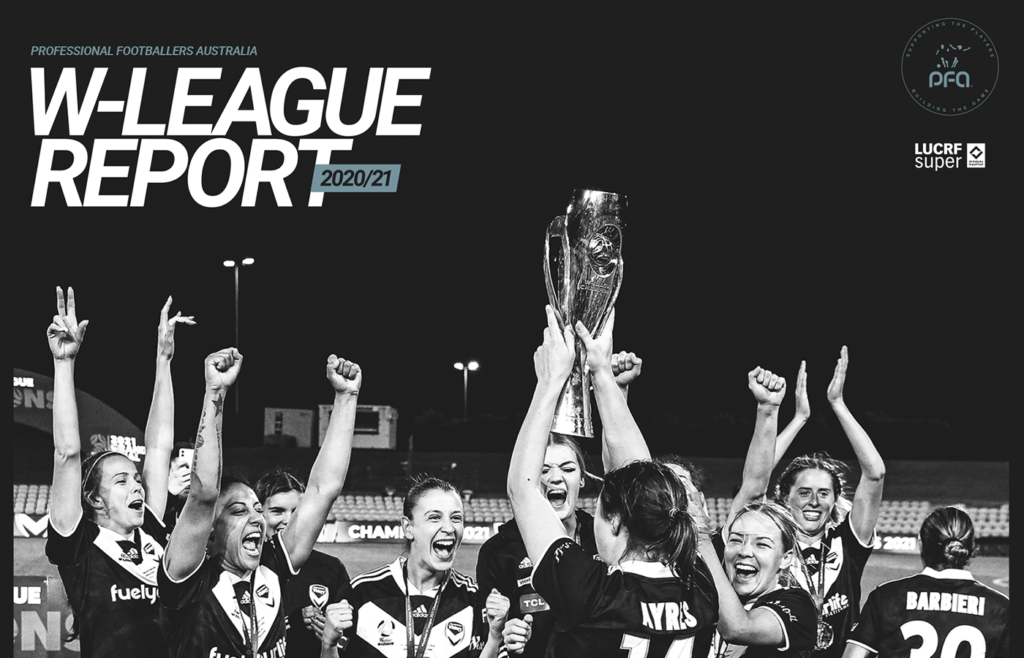Professional Footballers Australia (the PFA) today published the fifth annual report of the W-League, surveying the employment framework and workplace conditions of Australia’s domestic competition for professional female footballers.
The 39-page Report provides a unique historical snapshot of a transitional season in which the campaign was disrupted by the COVID-19 pandemic and arrives at a pivotal moment in the W-League’s evolution.
Based on industry trends, independent research, data and player feedback, the Report analyses four key components of the W-League: the Employment Framework, League Assessment, Technical Report and Injury Report, providing a comprehensive review of the 2020/21 season.
The following are among the findings in the report:
Increase in Match Minutes for Emerging Talent
Players within the 18-24 age bracket enjoyed a 38% increase in minutes, halting the previous decline within that cohort. Data compiled in the Report reveals 24 players aged 22 and under played over 900 minutes (around 83% of available match minutes), which represents the highest volume of players to reach that threshold since 2014 – which at the time included the likes of Matildas stars Alanna Kennedy, Steph Catley and Sam Kerr.
Competition Evolution is Required to Keep Pace Globally and Domestically
Since the expansion of the competition in 2015 to include Melbourne City, the W-League has failed to keep pace with the rapid rise of women’s football across the globe. In its current form the W-League offers close to half of the matches available in the NWSL and WSL and less opportunity for players due to just nine clubs.
Squad Stability led to Finals Qualification
The four most stable squads in the competition this year were also the four finalists – Brisbane Roar, Canberra United, and Melbourne Victory. Brisbane Roar, Canberra United, and Melbourne Victory had seven players accumulate over 90% of available match minutes, while Sydney FC had six players.
Highest-scoring league in Global Comparison
In a comparison against the America’s NWSL, England’s FAWSL, Norway’s Toppserien and Sweden’s Damallsvenskan, the W-League was the highest scoring league in 2020/21, recording an average of 3.16 goals per game.
Broadcast Viewership Increased by over 50%
Average viewership per game surged almost 50% higher than the previous season. The average combined viewership per game was 23,081 (up from 15,421 last season) and the Grand Final was 99,069 (up from 62,000).
PFA Co-Chief Executive Kathryn Gill said the report provided a ‘timely’ synopsis of where the W-League had progressed to and where the opportunities lie for the future.
“The report outlines a range of challenges that our league faces in a post-pandemic landscape, but also several wonderful opportunities for our game as the W-League looks to match the rapid rise in women’s football globally,” Gill said.
“The increase in opportunities for players under 22 demonstrates that the W-League boasts depth and is a platform for new emerging talent, whilst the Technical Report illustrates a competition that is high-scoring and entertaining – perhaps best evidenced by an encouraging increase in broadcast viewership this season.
“Following the separation of the professional leagues the opportunity now lies in building on the foundations that were preserved this season and harnessing the W-League’s potential to build a legacy for Australian football and professional players.”








